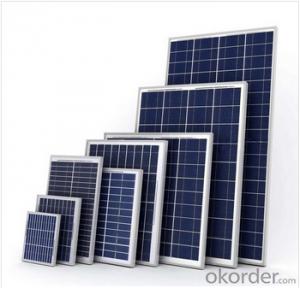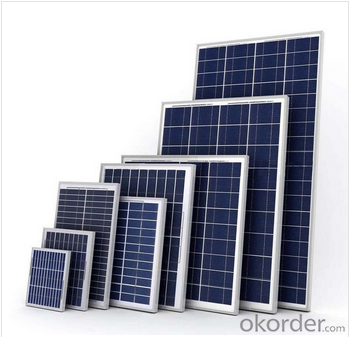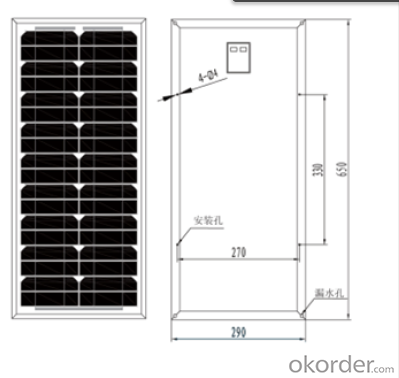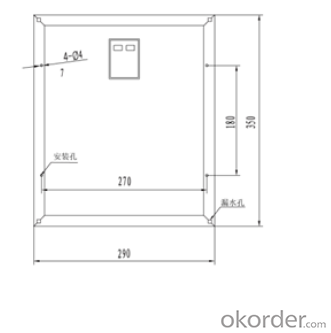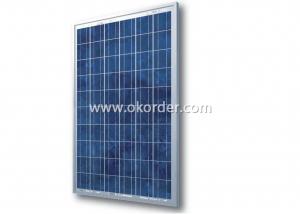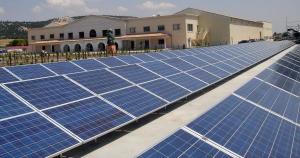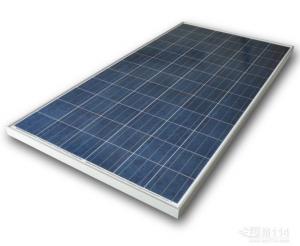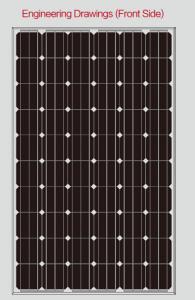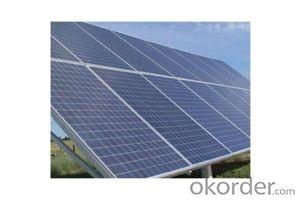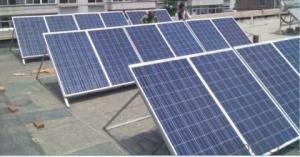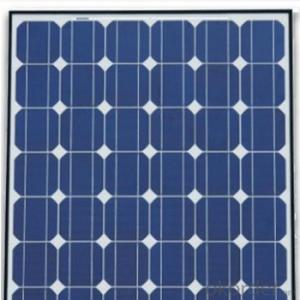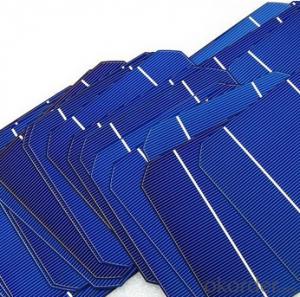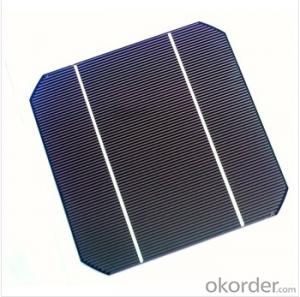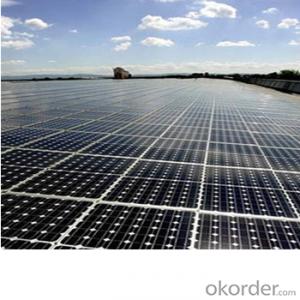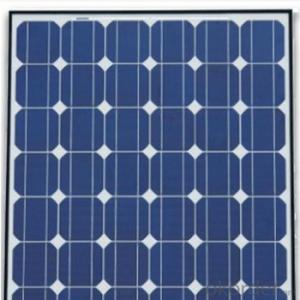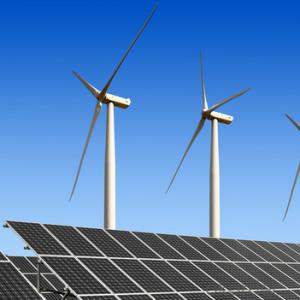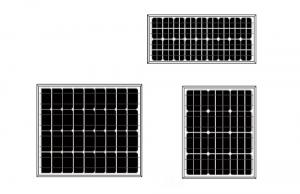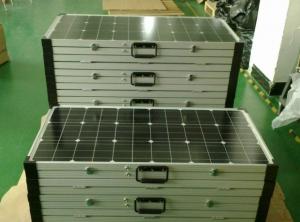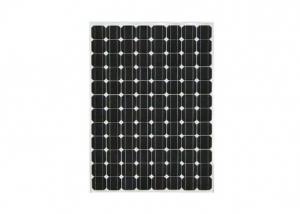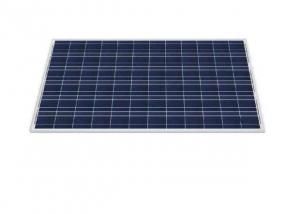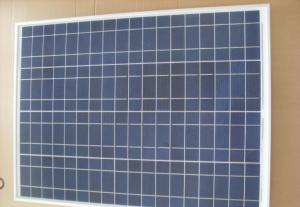Solar Panels Charlotte - High Efficiency Poly/Mono Solar Module Ice-24
- Loading Port:
- China main port
- Payment Terms:
- TT OR LC
- Min Order Qty:
- 200 watt
- Supply Capability:
- 500000 watt/month
OKorder Service Pledge
OKorder Financial Service
You Might Also Like
Instruction
Format : 156 mm × 156 mm ± 0.5 mm
Thickness: 210 μm ±40 μm
Front (-) : 1.5mm bus bars (silver),blue anti-reflection coating (silicon nitride)
Back (+) : 2.5mm wide soldering pads (silver) back surface field (aluminium)
Feature
1. High efficiency and High power.
2. Long-term electrical stability.
3. Lowest price and Fastest delivery.
4. Good quality and best service.
5. Bulk supply
6. Trusted Warranty
7. Big Sale
8. More than 25 years on the lifetime.
Images
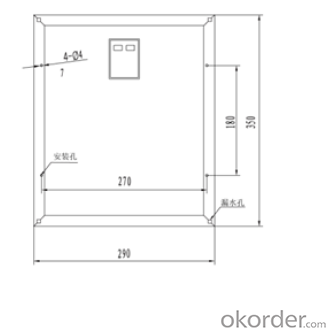
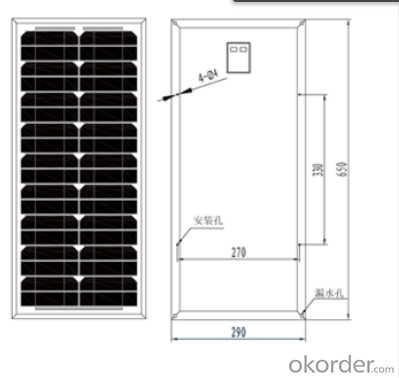
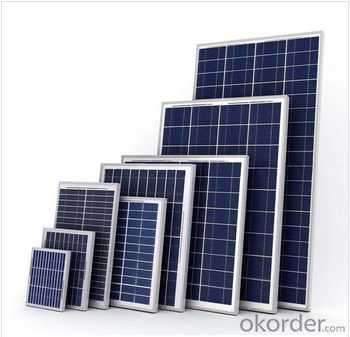
Specification
Electrical Characteristic of Mono Solar Cells
Efficiency (%) | Pmpp (W) | Umpp (V) | Impp (A) | Uoc (V) | Isc (A) | FF (%) |
18.35 | 4.384 | 0.526 | 8.333 | 0.63 | 8.877 | 78.39% |
18.20 | 4.349 | 0.526 | 8.263 | 0.63 | 8.789 | 78.54% |
18.05 | 4.313 | 0.525 | 8.216 | 0.63 | 8.741 | 78.32% |
17.90 | 4.277 | 0.524 | 8.161 | 0.629 | 8.713 | 78.04% |
17.75 | 4.241 | 0.523 | 8.116 | 0.629 | 8.678 | 77.70% |
17.60 | 4.206 | 0.521 | 8.073 | 0.628 | 8.657 | 77.36% |
17.45 | 4.170 | 0.519 | 8.039 | 0.628 | 8.633 | 76.92% |
17.30 | 4.134 | 0.517 | 8.004 | 0.626 | 8.622 | 76.59% |
17.15 | 4.098 | 0.516 | 7.938 | 0.625 | 8.537 | 76.80% |
17.00 | 4.062 | 0.512 | 7.933 | 0.625 | 8.531 | 76.18% |
16.75 | 4.002 | 0.511 | 7.828 | 0.625 | 8.499 | 75.34% |
16.50 | 3.943 | 0.510 | 7.731 | 0.625 | 8.484 | 74.36% |
FAQ
We have organized several common questions for our clients,may help you sincerely:
1. What’s price per watt?
A: It’s depends on the quantity, delivery date and payment terms of the order. We can talk further about the detail price issue. Our products is high quality with lower price level.
2. Can you tell me the parameter of your solar cells?
We have different series of cells with different power output, both from c-si to a-si. Please take our specification sheet for your reference.
3. How do you pack your products?
We have rich experience on how to pack the panels to make sure the safety on shipment when it arrives at the destination.
- Q: Can solar panels be installed on windows?
- Yes, solar panels can be installed on windows. There are transparent solar panels available that can be installed on windows to generate electricity while still allowing light to pass through. These panels are designed specifically for windows and can be a great way to utilize the available space for solar energy generation.
- Q: I need to find a way to clean solar panels that automated, at best;A way beside using a large 'squeegee'
- Automating okorder /
- Q: Can solar panels be installed on schools or educational campuses?
- Yes, solar panels can be installed on schools or educational campuses. In fact, many educational institutions are increasingly adopting solar energy systems as a sustainable and cost-effective solution for their power needs. Installing solar panels on schools not only helps reduce carbon emissions and reliance on fossil fuels, but also provides educational opportunities for students to learn about renewable energy and its benefits. It can also lower electricity bills and redirect saved funds towards educational programs.
- Q: Can solar panels be used off-grid?
- Yes, solar panels can be used off-grid. Off-grid solar systems are designed to generate and store electricity in batteries for use in locations without access to a utility power grid. This allows for self-sufficiency and independence from traditional power sources.
- Q: Can solar panels be used in areas with high levels of pollution from industrial emissions?
- Yes, solar panels can still be used in areas with high levels of pollution from industrial emissions. While pollution can have a slight impact on the overall efficiency of solar panels, they can still generate electricity even under such conditions. However, it is important to regularly clean the panels to ensure maximum performance and efficiency. Additionally, investing in advanced solar panel technologies, such as anti-soiling coatings, can help mitigate the impact of pollution and maintain their effectiveness in polluted areas.
- Q: I thought that I had a fairly good understanding of watt's law, but i'm starting to doubt myself.If I have a load of 4500watts at 240 volts, how many watts of solar panels do I need, if the solar panels are at 2v?Yes, Yes... I have a charge controller, batteries, etc...So the way I looked at this at first:watts = volts * amps For the load4500 = 240 * xx would be 8.75aFor the power source (each solar panel)00 = 2 * xx would be 8.3a8.75 / 8.3 = 2.25, rounded up = 3So... based on that I came to the conclusion that I needed 3 solar panels...But... then I was thinking. Does it work that way?Or do I need 4500 / 00 = 45, aka 45 solar panels?In other words...If I have a 2v power source, how many watts do I need to drive a load of 4500w at 240v?ThanksMatt
- The easy way is to just use the power values. You need 4500W. Each solar panel delivers 00W (from a value in your working). Therefore you need 4500/00 = 45 solar panels. This is a crude calculation, ignoring efficiencies, voltage conversion losses and losses due to internal resistance. You would probably need quite a few more than 45 panels. ___________________________ I'll explain how to do the calculation your way. Each solar panel delivers 00W with a voltage of 2V. So the current is 00/2 = 8.333A. Each solar panel delivers 8.333A at 2V. But you require 8.75A at 240V panel delivers 00W. To get 4500W, you need: 8.75/8.333 = 2.25 times more panels to increase the current AND 240/2 = 20 times more panels to increase the voltage. So overall you need 2.25 x 20 = 45 panels. Of course if the power output of each solar panel is not 00W, you have to change the above calculation accordingly.
- Q: Can solar panels be installed on community buildings?
- Yes, solar panels can be installed on community buildings. Installing solar panels on community buildings is a popular and effective way to generate clean and renewable energy for the community. It not only helps reduce electricity costs but also contributes to a sustainable and eco-friendly environment.
- Q: Do solar panels require batteries?
- No, solar panels do not require batteries.
- Q: For example, If I were powering my house with solar panels, would it be more efficient or effective, (or I guess would I get more energy) out of a day that measured 90 degrees Fahrenheit as opposed to a day that is 70 degrees Fahrenheit.
- If you are talking about solar PV (photovoltaic), panels, (these are the solar panels that generate electricity), temperature DOES effect the power output. But it works opposite of your example. They actually work better in cooler temperatures. In other words, you will get more electricity on a cold, sunny day than you will on a warm, sunny day. The difference is not huge. It is a percentage point or two for every ten degrees cooler it is. But it is significant enough that solar system designers like myself need to know the temperature fluctuations in the area we are designing for. I know of a few improperly designed systems that were damaged on sunny winter days. Solar thermal panels (the ones that heat water) do not work this way. A warmer sunny day is usually better, but again, the difference is not huge.
- Q: Can solar panels be installed on a museum or cultural institution?
- Yes, solar panels can be installed on a museum or cultural institution. Many museums and cultural institutions have embraced solar energy as a sustainable and environmentally-friendly solution for their energy needs. Installing solar panels not only helps reduce their carbon footprint but also saves on electricity costs in the long run.
Send your message to us
Solar Panels Charlotte - High Efficiency Poly/Mono Solar Module Ice-24
- Loading Port:
- China main port
- Payment Terms:
- TT OR LC
- Min Order Qty:
- 200 watt
- Supply Capability:
- 500000 watt/month
OKorder Service Pledge
OKorder Financial Service
Similar products
Hot products
Hot Searches
Related keywords
